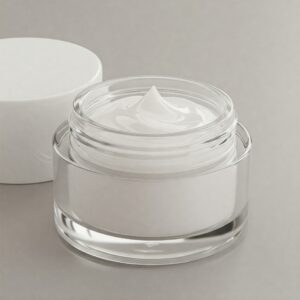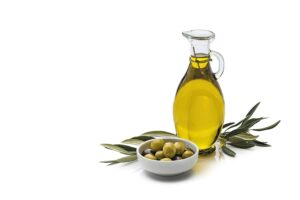Wine is a drink of tradition, yet modern winemaking involves meticulous processes that ensure the highest quality. One of these crucial steps is filtration. Whether you’re a winemaker or an enthusiastic wine drinker looking to deepen your knowledge, understanding the role of filtration in wine production is essential. In this guide, we will explore how wine is filtered, the various filtration methods, and the differences between filtering red and white wines.
How is Wine Filtered?
Wine filtration is the process of removing unwanted particles from wine to improve clarity, stability, and quality. These particles may include dead yeast cells, bacteria, tartrates, and grape solids that remain after fermentation. Proper filtration can enhance the flavor and shelf life of wine while also providing aesthetic appeal by ensuring the wine looks clear in the bottle.
In the winemaking process, filtration can take place at various stages, from after fermentation to just before bottling. The extent and type of filtration depend largely on the style of wine being produced, as well as the winemaker’s goals. Some winemakers prefer a minimal filtration approach to retain more character in the wine, while others opt for more thorough filtration to produce a cleaner, more polished product.

Wine Filtration Methods
There are several methods used to filter wine, each with its pros and cons depending on the winemaker’s goals. Let’s explore the most common filtration techniques:
1. Depth Filtration
Depth filtration is one of the most traditional methods and involves passing the wine through layers of filter media, such as diatomaceous earth or cellulose. These layers capture larger particles as the wine moves through. This method is often used for rough filtration early in the winemaking process when the wine contains larger sediments that need to be removed before more refined methods are applied.
- Advantages: It can handle a large load of particles and provides a gradual, gentle filtration.
- Disadvantages: It may not remove very fine particles, and the filter media can impart subtle flavors to the wine if not managed correctly.
2. Surface Filtration (Membrane Filtration)
Surface filtration, also known as membrane filtration, involves passing wine through a fine filter membrane with microscopic pores that trap particles on the surface. This method is usually used toward the end of the winemaking process for polishing and sterilizing the wine.
- Advantages: Highly effective in removing bacteria, yeast, and fine particles, which helps stabilize the wine.
- Disadvantages: It can strip some flavors and character from the wine if overused, and it’s a more expensive option.
3. Cross-Flow Filtration
Cross-flow filtration is a modern, efficient method where the wine flows parallel to a filter membrane rather than directly through it. This technique prevents clogging and allows for continuous filtration.
- Advantages: It minimizes the risk of clogging, reduces wine loss, and offers a high degree of clarity and stability.
- Disadvantages: It’s one of the more expensive and energy-intensive methods.
4. Pad Filtration
Pad filtration involves running the wine through a series of filter pads, with different levels of coarseness. It’s typically used for intermediate filtration stages to remove medium-sized particles.
- Advantages: Flexible and affordable, with the ability to tailor the filtration to the wine’s needs.
- Disadvantages: Pads need regular changing, which can make the process time-consuming.
5. Centrifugation
Centrifugation uses centrifugal force to separate solid particles from the wine. It’s not commonly used in smaller wineries but can be found in larger, industrial-scale operations.
- Advantages: Rapid and efficient, especially for high-volume production.
- Disadvantages: Expensive equipment and can slightly alter the texture and mouthfeel of the wine.
When to Filter Red and White Wine?
The timing of filtration is critical for both red and white wines. The need for filtration often depends on the wine’s style and intended market. Generally, white wines are filtered more often than reds due to their clarity requirements, but there are no hard and fast rules.
White Wine
White wines tend to require more filtration since they are often bottled young and need to appear crystal clear to consumers. Filtration for white wines typically occurs:
- After fermentation to remove yeast and sediment.
- Before bottling to ensure stability and prevent any unwanted refermentation or microbial growth in the bottle.
In some cases, certain white wines like natural or organic wines may undergo minimal filtration to maintain more complexity and flavor. However, most white wines benefit from a more thorough filtration process to meet market demands for clarity.
Red Wine
Red wines, especially those that are intended to age, often undergo less filtration. Filtration can remove tannins and other compounds that contribute to the wine’s aging potential. That said, red wines typically go through:
- Rough filtration after fermentation to remove grape skins and large solids.
- Finer filtration before bottling, especially for younger reds or wines intended for immediate consumption.
For premium red wines that will be cellared for years, winemakers might opt for minimal filtration or even forego it altogether to preserve the wine’s complexity and potential for aging.

Differences in Filtering Red and White Wine
Filtering red and white wines involves different considerations due to the differences in their composition and production processes. These differences are reflected in both the method and the extent of filtration:
Red Wine Filtration
- Less intensive filtration is preferred to maintain the tannins and phenolic compounds that are essential for the structure and aging of the wine.
- Winemakers often rely on natural settling (also called racking) to allow solids to fall out of the wine over time before using minimal filtration.
- Because red wines are typically fermented with the grape skins, they contain more solids and require initial filtration to remove these particles without stripping away the essential elements.
White Wine Filtration
- White wines are often filtered more thoroughly to achieve a bright, clear appearance, as clarity is more critical for consumer appeal.
- They tend to be bottled earlier than reds, so filtration is necessary to prevent microbial instability and haziness after bottling.
- Sterile filtration is commonly used for white wines to ensure that no yeast or bacteria remains, which is important for wines with residual sugar that could potentially ferment in the bottle.
Final Thoughts on Wine Filtration
Wine filtration is a delicate balance between clarity, stability, and preserving the character of the wine. While some winemakers champion unfiltered wines for their authenticity and depth of flavor, most wines, particularly those intended for the mass market, benefit from some level of filtration.
Choosing the right filtration method and deciding when to filter are critical decisions that winemakers must make to craft wines that are not only delicious but also visually appealing and stable for the long term.
Whether you’re producing a crisp white wine or a rich, tannic red, understanding the nuances of filtration will help you appreciate the complexities behind each bottle. For the winemaker, mastering filtration can mean the difference between a cloudy, unstable wine and one that shines both in the glass and on the palate.
You might be interested:





